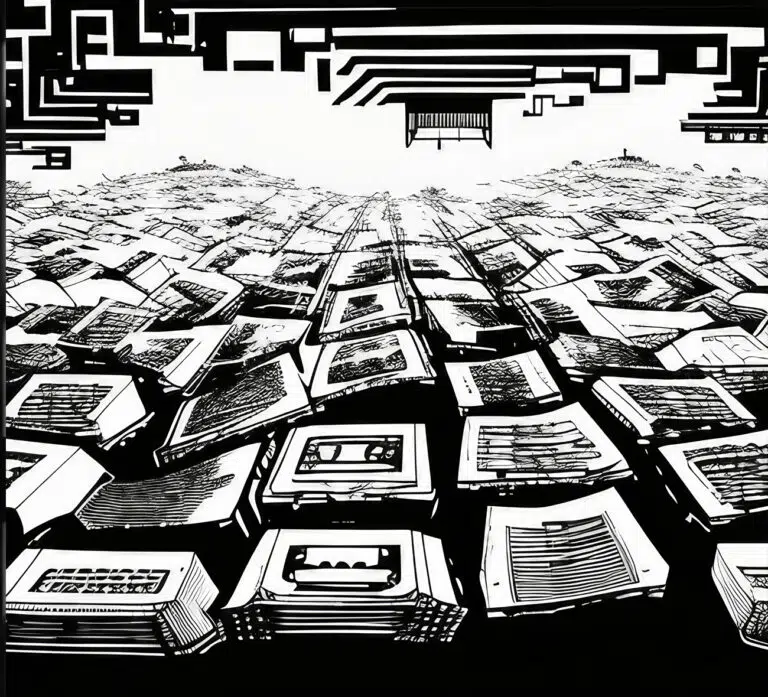Last week, we mentioned how a multichain network would look in the future blockchain environment. The multichain future sounds like an inevitable scenario that the world will develop towards. The concern for typical users like us is how this affects our Web3 journey. Will it be more complex and challenging to access a multichain Web3 than it already is?
Why a Multichain Future?
Layer one blockchain networks have different capabilities and trade-offs in terms of decentralization, scalability, and security. Applications like games, digital identity, and payment systems have different focuses, some may prioritize one or two of these factors over the others, which could lead them to adopt different blockchain networks for development.
In real-life examples, we can see layer one blockchains like Bitcoin, Ethereum, Polygon, Binance Chain, and Solana, have different capabilities and focus on various development environments for building infrastructures and applications.
Thinking of all the apps you installed on your phone, like social media, messaging, banking, music; blockchain technology has the potential to be integrated into a variety of existing applications and services to provide better user experiences and ownership.
Wallet as the access
Currently, we use username and password to log in to applications and access our profile. In Web3, we use a wallet instead. Users use digital wallets that store their private keys to access their assets and identity on the blockchain. This means that users have more control over their identity and assets, and can access them across different Web3 applications without the need for a centralized identity provider.
To access and use Web3 or Dapps, you must have a wallet associated with the specific blockchain. For instance, to buy ETH-based NFTs on OpenSea, you’ll need an Ethereum wallet. Similarly, to use Defi on Binance Chain or mint an NFT on MagicEden, you’ll need wallets on the respective blockchains. This requirement can be problematic and cause inconvenience such as:
a. Difficulty in managing multiple wallets across different chains
b. Disruption in the user flow while switching between applications
c. Difficulty in keeping track of total assets
d. Security risks involved in maintaining multiple wallets
e. And most of all, it’s very difficult to use
To address these challenges, a multi-chain crypto wallet can be helpful.
6 Benefits of a Multichain Crypto Wallet
One wallet, multi chains
Most people are tired of creating new accounts for every new website or application they are signing up for. And imagine you need to download an extension or app for every chain you interact with. With a multichain wallet, you don’t need to create a new account for each website or application you use. Instead, you can create multiple wallets for different chains within a single app, which saves time and provides a unified experience.
Advance Security
The more applications, the easier to expose credentials. Concentrating wallets on one application can enhance security by focusing awareness and activities on one application. Security of the multichain wallet is obviously a main criterion that these providers are concerned with and competing for, to offer better services to users.
The multichain wallet can also be an authentication app to sign blockchain transactions. The smartphone application can turn your phone into a trusted device handling permission and approval for all incoming transactions and requests. This is much safer and simpler than signing on browser extensions or separately on different wallet apps.
Real-Time Tracking
Digital and online assets will be a massive part of our future, and we definitely need a platform to allow us to oversee all our digital assets across chains. Just like looking at our currencies holdings in the bank accounts, we want to be able to look at all our cryptocurrencies assets, NFT, and digital assets as a whole, and in real time.
Owning these assets separately in different wallet applications would not allow such a function, only if they are integrated. And we anticipate more functions can be built based on the integrated structure.
Cross-chain Transfers
Cross-chain transfers will be a common scenario in the future, like swapping one currency for another. If these wallets are separated, such transfers will take many steps and procedures, like filling in addresses, looking for a 3rd party swap, jumping across websites or applications, etc.
With a multi-chain wallet, cross-chain transfers can be performed easily and safely within the app, without the need to fill in addresses or search for a third-party swap.
Accessibility
A separate app for each chain will limit your accessibility as you must rely on your target website and application to support your chain. For a multichain wallet, which uses an access and connection solution like Walletconnect, would give greater accessibility for users.
Ease of Use
Just creating a wallet already sounds daunting to non-Web3 users, especially when there’s a big responsibility of self-custody and memorizing seed phrases. A multichain wallet helps simplify the process like a one-click create a wallet, storing your seed phrases and private keys in an encrypted format that only you can access.
Final Thoughts
A wallet application is a vital tool for anyone exploring the Web3 world. Its most critical purpose is to simplify our experience and make it as convenient as possible. We have already discussed the reasons why it’s important to choose a wallet that supports multichain and what features we can expect. With these in mind, you can confidently choose the right wallet for your needs.






